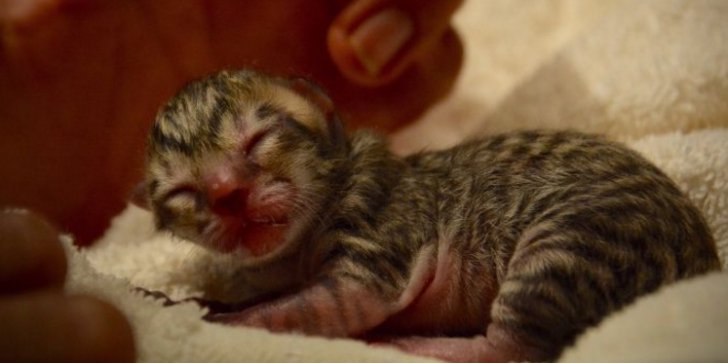A Thai man had just finished his shift when he saw the small animal walking along the road.
When I got closer, I saw that it was a kitten that hadn’t sat down in two days. The kitten was born deaf.
The man realized that he was alone and could not help him, so he felt sorry for him and decided to take the cat and wait at home. If the animal is left alone on the street, it has no chance of survival.

After the man brought the kitten home, he gave it a bottle of milk and took care of it. The animal felt comfortable with its new owner and settled in the man’s house.
Over time, the kitten began to mature and grow. The man came to the conclusion that the animal he was caring for did not look like a cat at all.

As he grew older, it became clear that he belonged to a different species. The man sought help from a veterinarian, who told him that the animal in question was actually a fishing cat.
The fishing cat’s body is covered with thick, soft, shiny fur. The fur is grey-gray on the face and sides and brown on the back.

The fur is sprinkled with small black or dark brown spots of different sizes, evenly distributed and located in vertical stripes, especially on the back and sides. Adults have a body length of 75-86 cm, a weight of 8-14 kg and a tail of 25-33 cm.
The toes are slightly webbed, the claws are pointed, and the legs are only partially folded. The legs are long and slightly webbed at the ends.
“Catfishing” refers to a person skilled in catching fish, snakes, frogs, crabs, crustaceans, crayfish, snails, other aquatic animals and insects in a semi-aquatic environment.